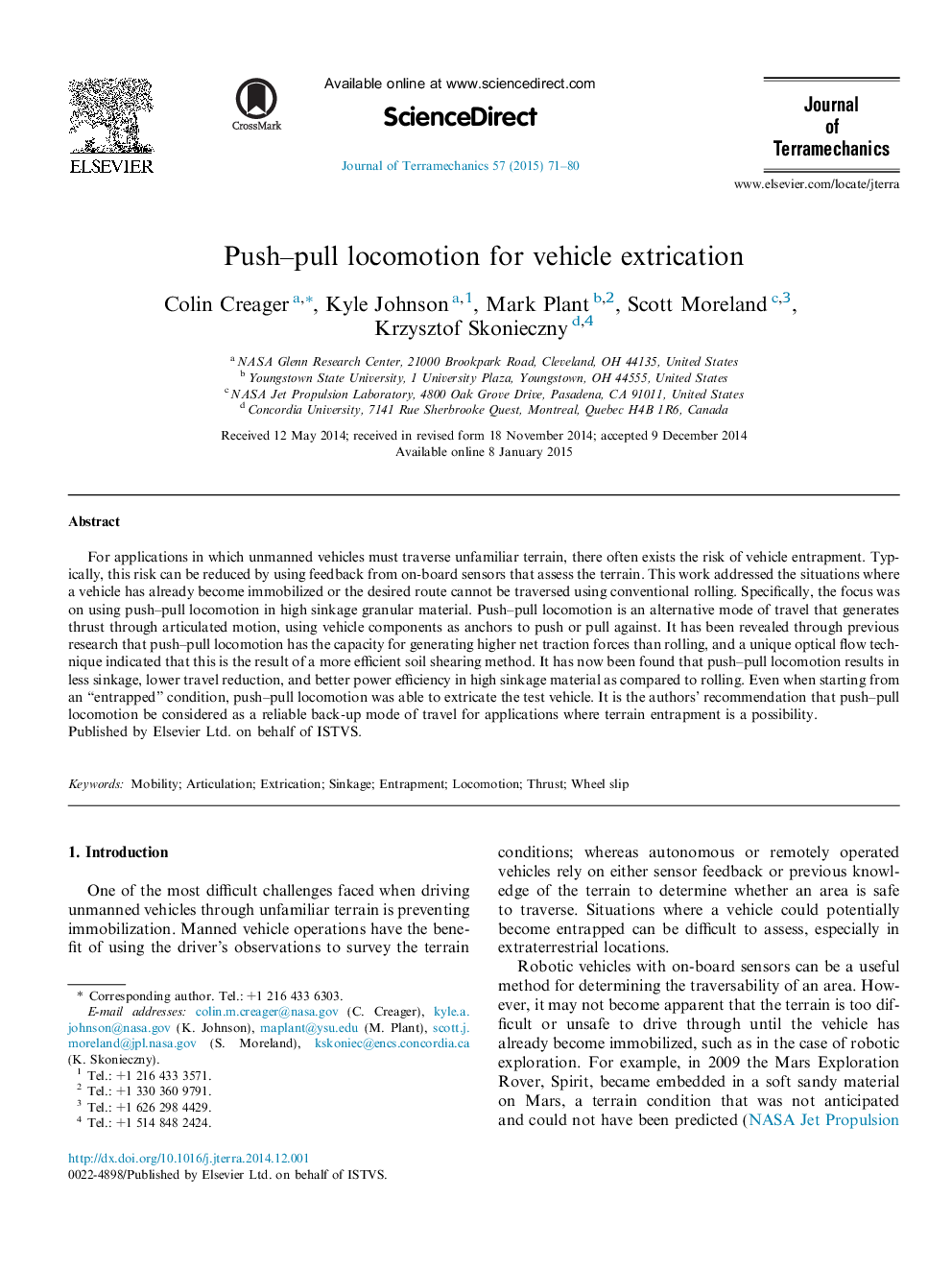| کد مقاله | کد نشریه | سال انتشار | مقاله انگلیسی | نسخه تمام متن |
|---|---|---|---|---|
| 801476 | 1467293 | 2015 | 10 صفحه PDF | دانلود رایگان |

• Push–pull locomotion can generate up to 40% more thrust than conventional rolling.
• Push–pull locomotion shears granular soil using a more efficient mode than rolling.
• In high sinkage soil, push–pull locomotion drove at a steady rate with minimal sinkage.
• Less energy was required of push–pull locomotion compared to rolling to traverse high sinkage soil.
• After a vehicle had become entrapped, push–pull locomotion was able to free the vehicle.
For applications in which unmanned vehicles must traverse unfamiliar terrain, there often exists the risk of vehicle entrapment. Typically, this risk can be reduced by using feedback from on-board sensors that assess the terrain. This work addressed the situations where a vehicle has already become immobilized or the desired route cannot be traversed using conventional rolling. Specifically, the focus was on using push–pull locomotion in high sinkage granular material. Push–pull locomotion is an alternative mode of travel that generates thrust through articulated motion, using vehicle components as anchors to push or pull against. It has been revealed through previous research that push–pull locomotion has the capacity for generating higher net traction forces than rolling, and a unique optical flow technique indicated that this is the result of a more efficient soil shearing method. It has now been found that push–pull locomotion results in less sinkage, lower travel reduction, and better power efficiency in high sinkage material as compared to rolling. Even when starting from an “entrapped” condition, push–pull locomotion was able to extricate the test vehicle. It is the authors’ recommendation that push–pull locomotion be considered as a reliable back-up mode of travel for applications where terrain entrapment is a possibility.
Journal: Journal of Terramechanics - Volume 57, February 2015, Pages 71–80